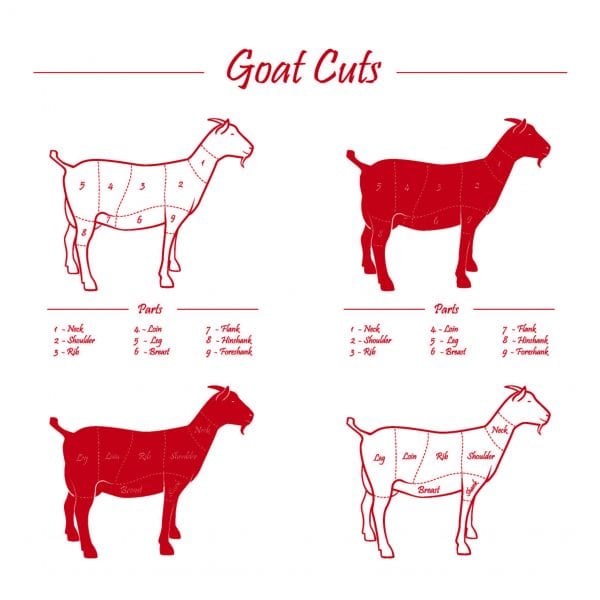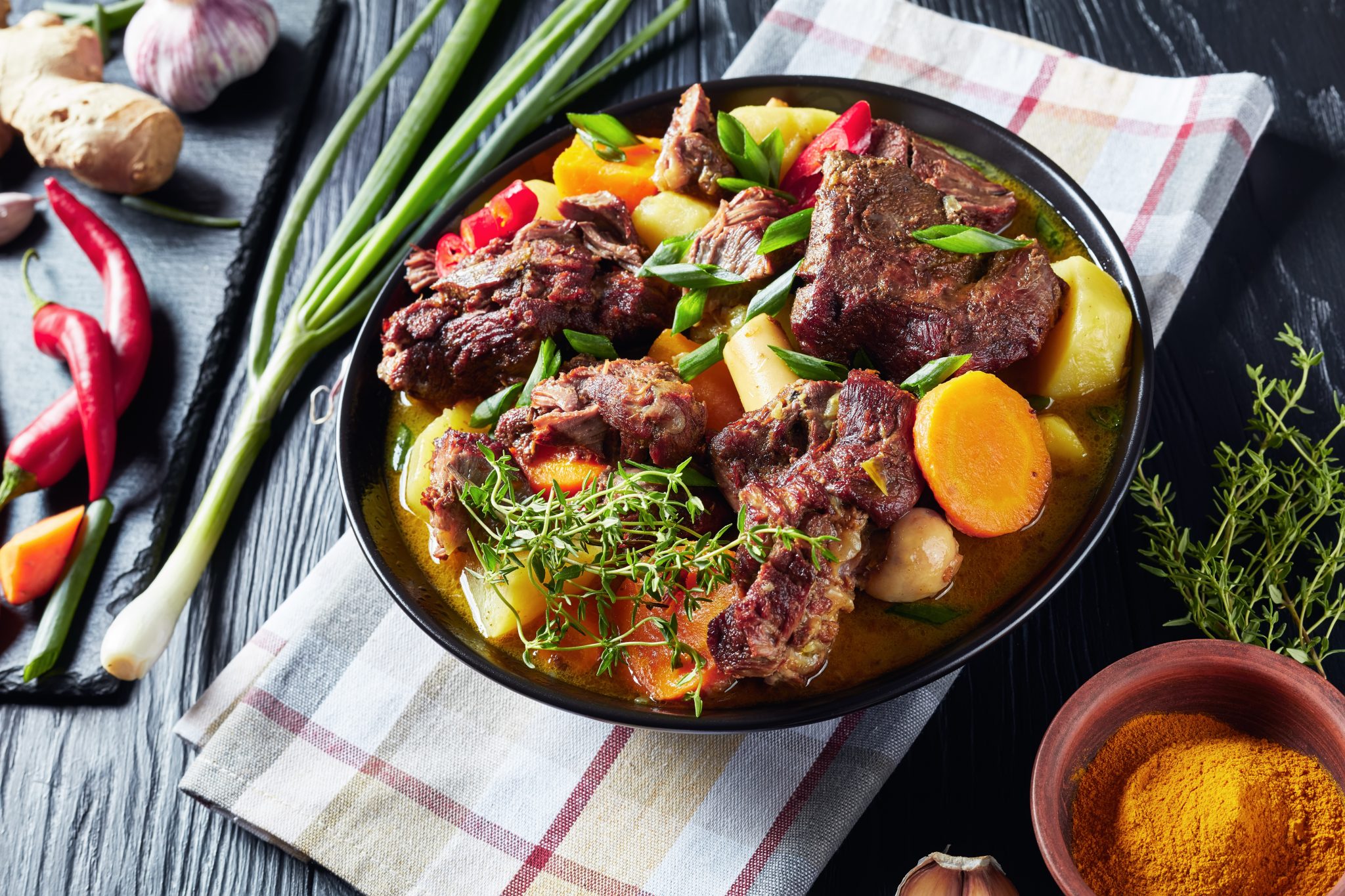Animals

Goat meat is one of the most widely-consumed meats in the world. In the United States, many African, Greek, Hispanic, Jamaican, and Middle Eastern households add goat meat to their nightly menus. However, some Americans are slow to warm up to the idea of eating goat. Goat meat contains less fat and is higher in certain nutritional values than chicken or beef. As some Americans seek to become more health conscious, goat meat is a great alternative.
Misconceptions About Goats and Goat Meat
Some misconceptions about goats and goat meat may hinder the meat from becoming a household staple in this country. Here are three common misconceptions that impact the meat goat industry.
- Goats eat everything. This is a myth. In fact, goats are considered picky eaters. Goats are highly selective and primarily eat leaves as a good source of protein. Research has reported that goats prefer tender shoots, seeds, and fruits of high-growing shrubs, vines, trees, forbs, and other weedy plant species. They do not eat clothing, tin cans, or other odd items as sometimes depicted. There are also some plants they do not readily consume.
- Goat meat is tough and gamey. Like other meat, the texture depends on how the animal is raised. It also depends upon the animal’s age, breed, nutrition, pre-slaughter conditions, and how it’s cooked. Younger goats will naturally have more tender meat and a mild flavor. Meat from older goats is less tender and has a stronger taste. Since goat meat has less fat, it needs to be cooked slowly and with a lot of liquid.
- Goat meat causes hypertension. When compared to chicken, beef, or pork, goat meat has less calories and saturated fat. It is also lower in cholesterol than beef or chicken. However, adding excessive sodium to goat or any meat when cooking could lead to high blood pressure.
Nutritional Value
Goat meat has less fat, calories, and cholesterol than more popularly consumed meats in America like chicken, beef, pork or even lamb. For example, a 3-ounce piece of goat meat has 122 calories compared to 180 in pork, 162 in chicken, 179 in beef, and 175 in lamb. It also has a high level of iron and approximately as much protein (23 grams) as other meats, averaging about 25 grams of protein (Correa, 2016).
Nutrient Composition of Goat and Other Types of Meat
| Nutrient | Goat | Chicken | Beef | Pork | Lamb |
|---|---|---|---|---|---|
| Calories | 122 | 162 | 179 | 180 | 175 |
| Fat (g) | 2.6 | 6.3 | 7.9 | 8.2 | 8.1 |
| Saturated Fat (g) | 0.79 | 1.7 | 3.0 | 2.9 | 2.9 |
| Protein (g) | 23 | 25 | 25 | 25 | 24 |
| Cholesterol (mg) | 63.8 | 76.0 | 73.1 | 73.1 | 78.2 |
 Meat Cuts
Meat Cuts
Like other meat, people can purchase pre-cut goat meat or have a goat carcass cut into different cuts, depending on their preference. Common cuts include:
- Ribs. Cut into racks or cutlets that are ideal for grilling or frying.
- Loins. Cut into chops or tenderloins. Loins can also be grilled or fried.
- Leg. Leave the bone in or cut into steaks for grilling or frying.
- Hindshank. Cut into shanks or drumsticks that can be braised, roasted or used in stews.
Goat meat can be found at local specialty butcher shop. Consumers can also search online for local shops that sell goat meat, or contact a goat association for a listing of local meat goat producers or shops.
Improving the Goat Industry
Cooperative Extension animal scientists and educators have worked diligently to assist meat goat farmers in Alabama and across the county. Their goals are to introduce sustainable management practices, decrease production costs, and increase goat inventory in the US, all with the hope of improving the meat goat industry in the country.
Their efforts are paying off. According to the United States Department of Agriculture, meat goats make up 83 percent of goats in America. The goat industry has also continued to increase by more than 5 percent each year since 1985. With more education and promotion, Extension hopes that more Americans will consider adding goat meat to their household menus.
Visit www.aces.edu to learn more about goat production in the Southeast.

